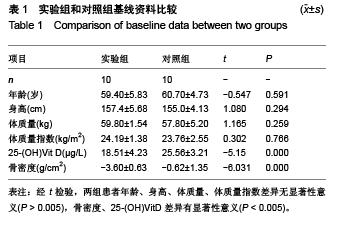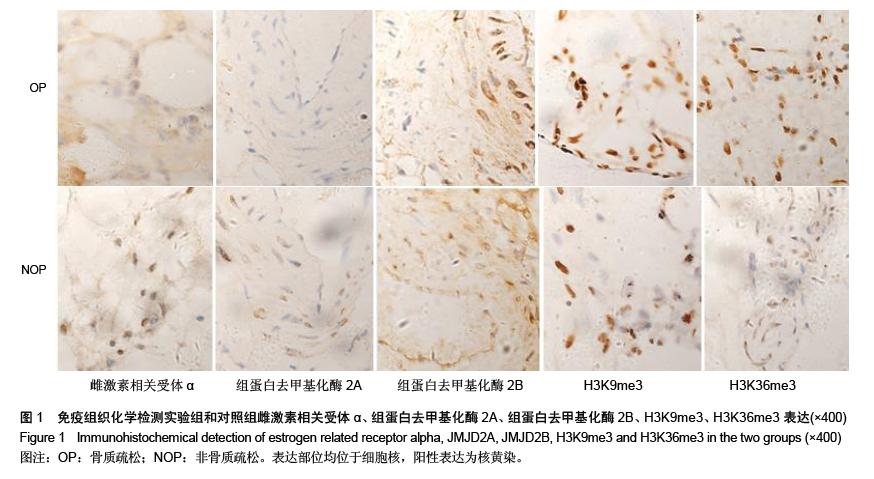中国组织工程研究 ›› 2016, Vol. 20 ›› Issue (2): 167-172.doi: 10.3969/j.issn.2095-4344.2016.02.003
• 骨组织构建 bone tissue construction • 上一篇 下一篇
组蛋白去甲基化酶JMJD2和雌激素受体相关受体α在绝经后骨质疏松症的表达
唐宏宇1,2,董路珏3,霍少川3,郭 承3,周 驰1,2,陈建发1,刘 勇3,王海彬1,2
- 1广州中医药大学第一附属医院骨科中心,广东省广州市 510405;2广州中医药大学国家重点骨科实验室,广东省广州市 510405;3广州中医药大学,广东省广州市 510405
Expression of jumonji domain-containing histone demethylase 2 and estrogen-related receptor alpha in postmenopausal osteoporosis
Tang Hong-yu1, 2, Dong Lu-jue3, Huo Shao-chuan3, Guo Cheng3, Zhou Chi1, 2, Chen Jian-fa1, Liu Yong3, Wang Hai-bin1, 2
- 1Orthopedics Center, the First Affiliated Hospital of Guangzhou University of Chinese Medicine, Guangzhou 510405, Guangdong Province, China; 2the National Key Research Laboratory of Orthopedics, Guangzhou University of Chinese Medicine, Guangzhou 510405, Guangdong Province, China; 3Guangzhou University of Chinese Medicine, Guangzhou 510405, Guangdong Province, China
摘要:
文章快速阅读:
.jpg)
文题释义:
背景:研究发现组蛋白去甲基化酶具有促进成骨细胞分化的作用;雌激素相关受体α可促进成骨细胞分化,增加骨形成。然而绝经后骨质疏松症组蛋白去甲基化酶表达以及与雌激素受体相关受体α的相关性未见报道。
结果与结论:绝经后妇女组蛋白去甲基化酶2A、组蛋白去甲基化酶2B、雌激素受体相关受体α表达为弱阳性到阳性不等,骨质疏松症患者组表达水平低于非骨质疏松症患者组,组间差异有显著性意义(P < 0.05);骨质疏松症患者组H3K9me3、H3K36me3表达水平高于非骨质疏松症患者组,组间差异有显著性意义(P < 0.05)。结果说明,绝经后骨质疏松症患者组蛋白呈高甲基化状态,组蛋白去甲基化酶2A、组蛋白去甲基化酶2B低表达,雌激素受体相关受体α水平与组蛋白去甲基化酶相一致;组蛋白去甲基化酶可能为骨质疏松的一种拮抗酶。
ORCID: 0000-0003-4350-3049(唐宏宇)


.jpg)
.jpg)
.jpg)